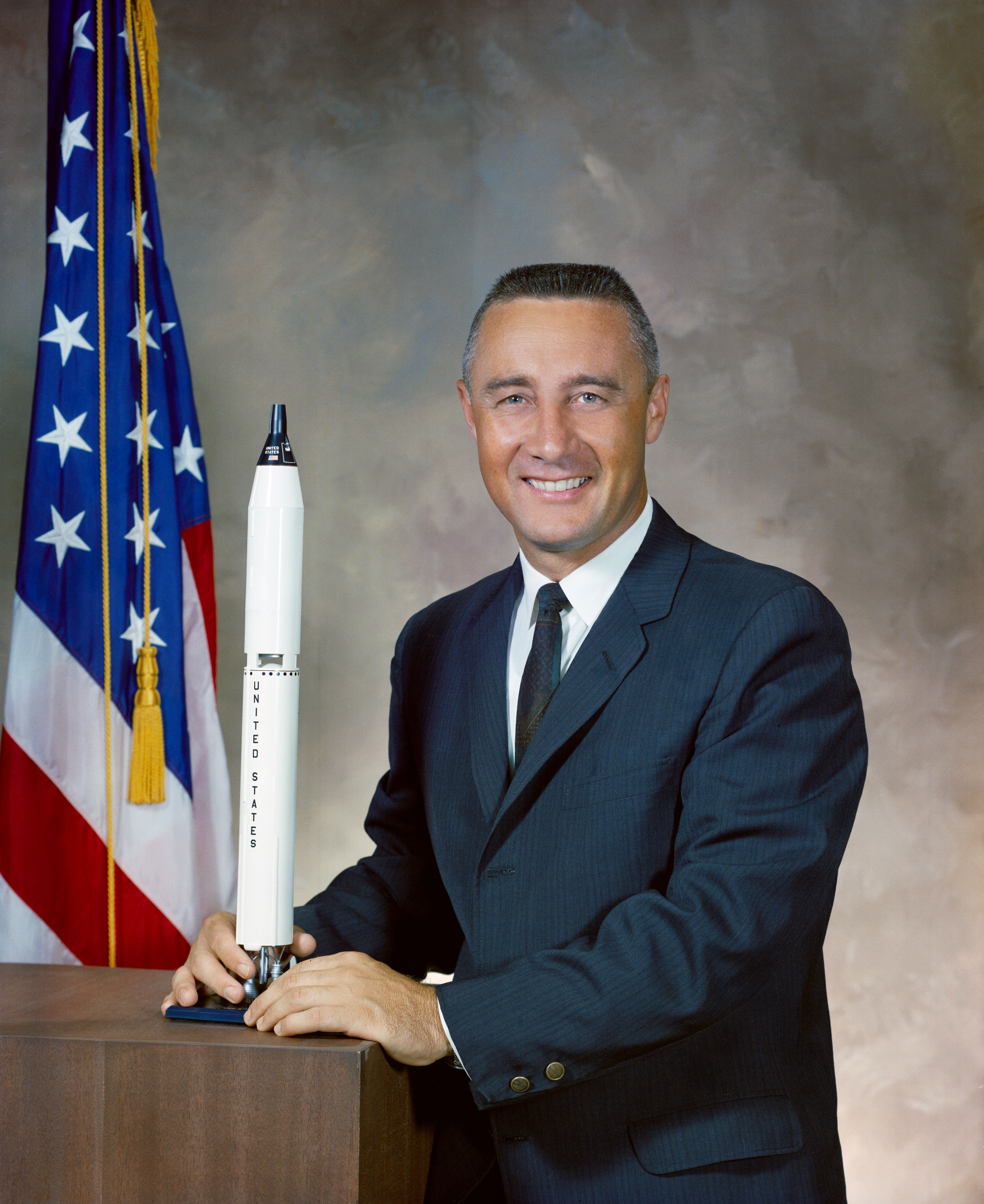Virgil Ivan "Gus" Grissom was a United States Air Force pilot and a member of the Mercury Seven selected by National Aeronautics and Space Administration's as Project Mercury astronauts to be the first Americans in Space. He was also a Project Gemini and an Apollo program astronaut. As a member of the NASA Astronaut Corps, Grissom was the second American to fly in Space, and first to do so twice.
Grissom was a World War II and Korean War veteran, mechanical engineer, and USAF test pilot. He was a recipient of the Distinguished Flying Cross, the Air Medal with an oak leaf cluster, two NASA Distinguished Service Medals, and, posthumously, the Congressional Space Medal of Honor.
During World War II, Grissom enlisted in the U.S. Army Air Forces as an aviation cadet. After his discharge from military service, Grissom enrolled at Purdue University, graduating with a bachelor's in mechanical engineering in 1950. He reenlisted in the U.S. Air Force, earning his pilot's wings in 1951, and flew 100 combat missions during the Korean War. After returning to the United States, Grissom was reassigned to work as a flight instructor at Bryan Air Force Base in Texas. He attended the U.S. Air Force Institute of Technology for a year, earning a bachelor's degree in aeromechanics, and received his test pilot training at Edwards Air Force Base in California before his assignment as a test pilot at Wright-Patterson Air Force Base in Ohio.
Selected as one of the Mercury Seven astronauts, Grissom was the pilot of Mercury-Redstone 4 , the second American suborbital flight, on July 21, 1961. At the end of the flight, the capsule's hatch blew off prematurely after it landed in the Atlantic Ocean. Grissom was picked up by recovery helicopters, but the blown hatch caused the craft to fill with water and sink. His next flight was in the Project Gemini program as command pilot for Gemini 3 , which was a successful three-orbit mission on March 23, 1965. Grissom, commander of AS-204 , along with his fellow astronauts Ed White and Roger B. Chaffee, died on January 27, 1967, during a pre-launch test for the Apollo 1 mission at Cape Kennedy, Florida.
Wikipedia
✵
3. April 1926 – 27. January 1967
